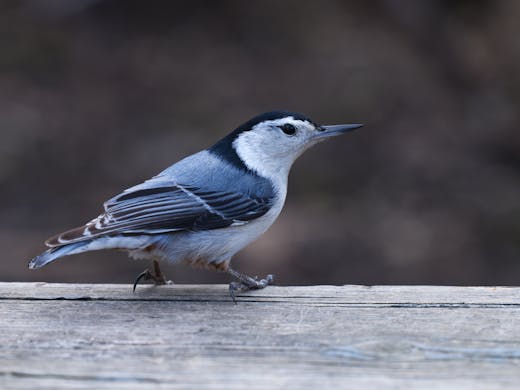Photography Camera Settings
Photos are taken during dawn and dusk, overcast or when the object is in the shadow. Except landscape, all shots are handhold, rarely on tripod. Our largest lens, the 70-200mm w/ or w/o TC2 isn't that long. Usually, kneeling or lying on the ground.
Bird Photography
We use the NIKKOR Z 70-200mm f/2.8 VR S lens with or without TC2. Manual mode with Auto ISO on.
Default Settings
If the bird is white or has white patches, or is on or near water, we apply exposure compensation of 1 to 2 stops.
On ground or perched: Single-point AF, Center-weighted Metering, Aperture f/11, Shutter Speed 1/1250, Auto ISO.
In flight: Dynamic-area AF, Center-weighted Metering, Aperture f/11, Shutter Speed > 1/1600, Auto ISO.
Shutter Speed Adjustments
Correct setting of the shutter speed for bird photography is critical. Unless aiming for artistic shots of blurred wings of birds in movement, we work with 1/1250s. If the bird is large and moving slowly, like Grey Blue Heron searching for food or Canada Goose feeding on grass we can slower down shutter speed without losing sharpness. For small, fast moving birds, we use at least 1/1600s. For birds in flight, we need at least 1/2000, 1/2500 yields better results.
Aperture Adjustments
Especially when taking photos of birds, a fast focusing camera/lens combo and good light conditions are critical. Whenever possible we work with an aperture of f/11. Acquiring fast focus depends heavily on the available light. If necessary due to low light or distracting background, we open aperture being aware that it will reduce the depth of field increasing the risk of blurred shots.
It’s important to be aware of the relationship between aperture and depth of field (DoF):
DoF = 2 * (N * CoC * H^2) / F^2
- N: F-number (aperture)
- CoC: Circle of confusion (a measure of the acceptable blur circle diameter. 0.03mm for Full Frame sensor)
- H: Distance from lens to subject
- F: Focal length of the lens
Macro Lens
| Aperture | CoC | H | F | DoF |
|---|---|---|---|---|
| f/2.8 | 0.03mm | 10cm | 105mm | 0.2mm |
| f/5.6 | 0.03mm | 10cm | 105mm | 0.3mm |
| f/11 | 0.03mm | 10cm | 105mm | 0.6mm |
| f/22 | 0.03mm | 10cm | 105mm | 1.2mm |
Telephoto Lens
| Aperture | CoC | H | F | DoF |
|---|---|---|---|---|
| f/11 | 0.03mm | 34m | 800mm | 1.2m |
| f/16 | 0.03mm | 34m | 800mm | 1.7m |
| f/22 | 0.03mm | 34m | 800mm | 2.4m |
Nesting Birds
In the past, we did take photos of nests and birds nesting but we completely stopped this activity. Getting close to a nesting pair of birds means stress for them which we prefer to avoid. We still take advantage of knowing the location of a nest in order to position ourselves optimal for getting a good shot of a parent arriving to or leaving the nest.
Distance to Bird
We prefer photos where the primary object covers around 1/3rd of width of the frame. This means that we have to get close, very close to the animal. Switching from FX to DX can help in some cases with the distance to the object but losing details or flexibility in post-production may not justify it.
The following table provides an estimation of the optimal distances required to capture animals, filling approximately 1/3 of the sensor width, in an optimal position for different camera setups involving various sensor sizes and focal lengths.
| Bird Size | SENSOR | 200MM | 400MM | 600MM | 800MM |
|---|---|---|---|---|---|
| 5cm | FX | 1m | 2m | 3m | 3m |
| DX | 1m | 3m | 4m | 5m | |
| 10cm | FX | 2m | 3m | 5m | 7m |
| DX | 3m | 5m | 8m | 10m | |
| 20cm | FX | 3m | 7m | 10m | 14m |
| DX | 5m | 10m | 15m | 21m | |
| 50cm | FX | 9m | 17m | 26m | 34m |
| DX | 13m | 26m | 39m | 51m | |
| 100cm | FX | 17m | 34m | 51m | 69m |
| DX | 26m | 51m | 77m | 103m |
Optimal Distance = (Object Size * Focal Length) / (1/3 * Sensor Size); FX = Full Frame Sensor 35mm; DX = Digital Extended, FX cropped by 1.5x. It is important to consider that the minimal focus distance of a particular camera, lens, and teleconverter setup may exceed the optimal distance mentioned in the table.
Macro Photography: Flowers, Insects
We use NIKKOR Z MC 105mm f/2.8 VR S. Manual mode with auto iso on. Minimal aperture. Note that with this lens, largest aperture varies dependent on focal plane starting at f2.8. Shutter speed is adjusted to achieve optimal iso (aiming for a value between 400 to 1k) but, not less than 1/200s though. We always take multiple shots because depth of field is so thin and minimal movements, like release button push, may move the object out of focus.
We use the macro lens also for close up of animals which allow us to get very close, like frogs. Settings are the same as with flower or insect macro shots.
Landscape Photography
We use the NIKKOR Z 24-70mm f/2.8 S at 24mm focal length. Manual mode, aiming for low iso 100-400 and closed aperture > f/11. Always taking multiple shots, up to 5, manually not auto bracket, with exposure adjustments and delay 2s.
We need your help! By making a contribution towards our hosting costs, you can help us provide an ad-free experience on our website in the near future. Paypal
